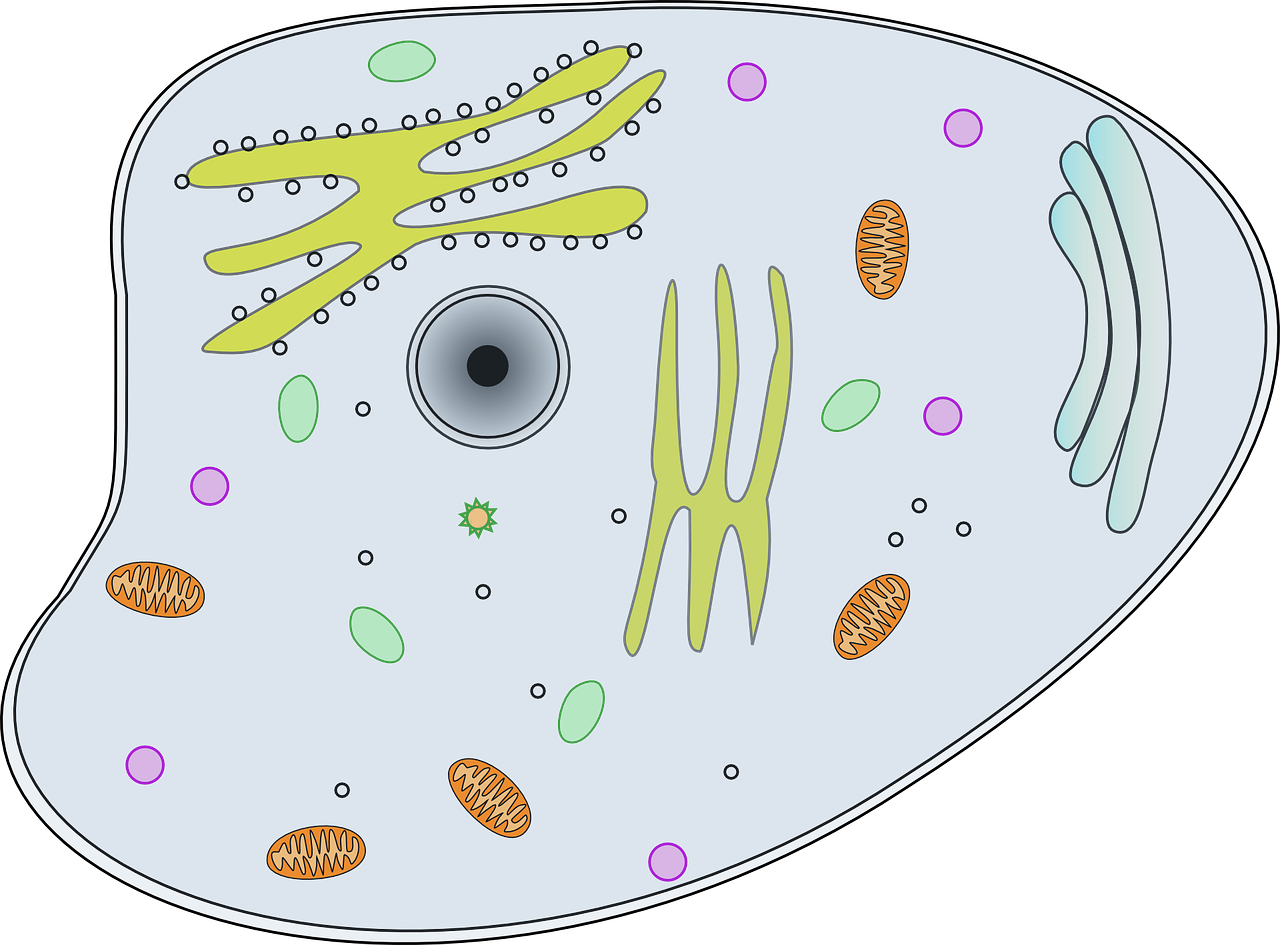- All living things are made up of cells.
- A cell is the smallest unit of life that can function independently.
- Below is a labelled diagram of a plant and animal cell side by side

- A typical cell has several structures with specific functions, including:
- Nucleus: The nucleus is like the cell’s control centre. It contains genetic material that controls the cell’s activity.
- Cytoplasm: The cytoplasm is a jelly-like substance that fills the cell and contains organelles. It supports the internal structures and reactions of the cell.
- Cell Membrane: The cell membrane holds the cell together and controls the passage of chemicals through the cell.
- Ribosomes: Ribosomes are the site of protein synthesis in the cell. In simple terms, they are involved in the making of proteins
- Mitochondria: Mitochondria produce the energy necessary for the cell’s survival and functioning through a series of chemical reactions. They break down glucose into an energy molecules.
- Cell Wall: The cell wall is made of cellulose, and it provides a wall-like structure that supports the shape of the cell.
- Chloroplasts: Chloroplasts contain chlorophyll and other enzymes that absorb light and carry out photosynthesis.
- Permanent Vacuole: The permanent vacuole contains cell sap, which is a solution of sugars and salts.
- The features of a typical cell are essential for the cell’s survival and functioning.
- The nucleus controls the cell’s activity, the cytoplasm supports internal structures and reactions, and the cell membrane holds the cell together and controls chemical passage.
- Ribosomes are the site of protein synthesis, while mitochondria produce energy for the cell’s survival.
- The cell wall supports the cell’s shape, and chloroplasts carry out photosynthesis.
- The permanent vacuole contains cell sap, a solution of sugars and salts.
- It is important to note that not all cells look the same, as you will see in other notes on this topic




